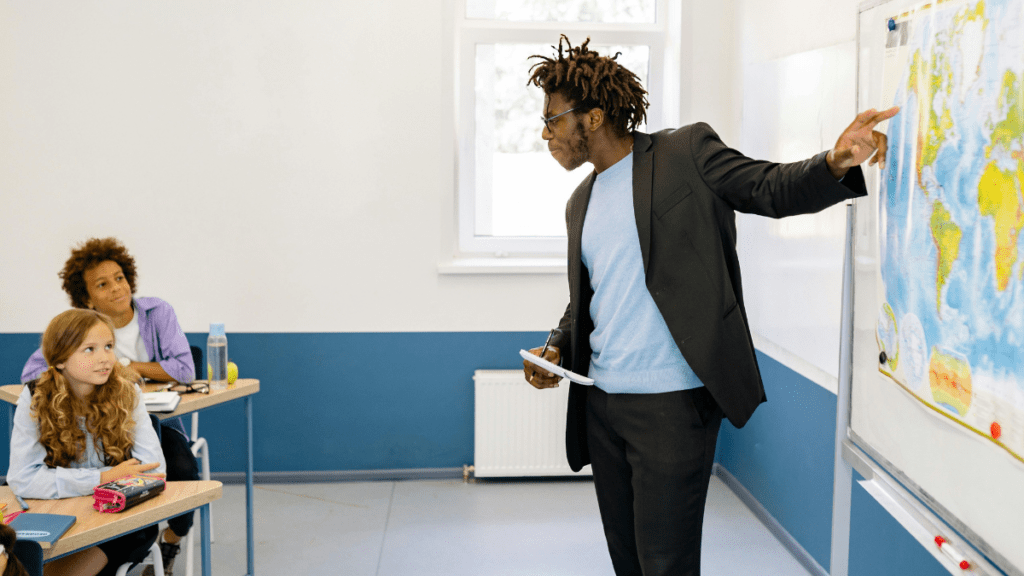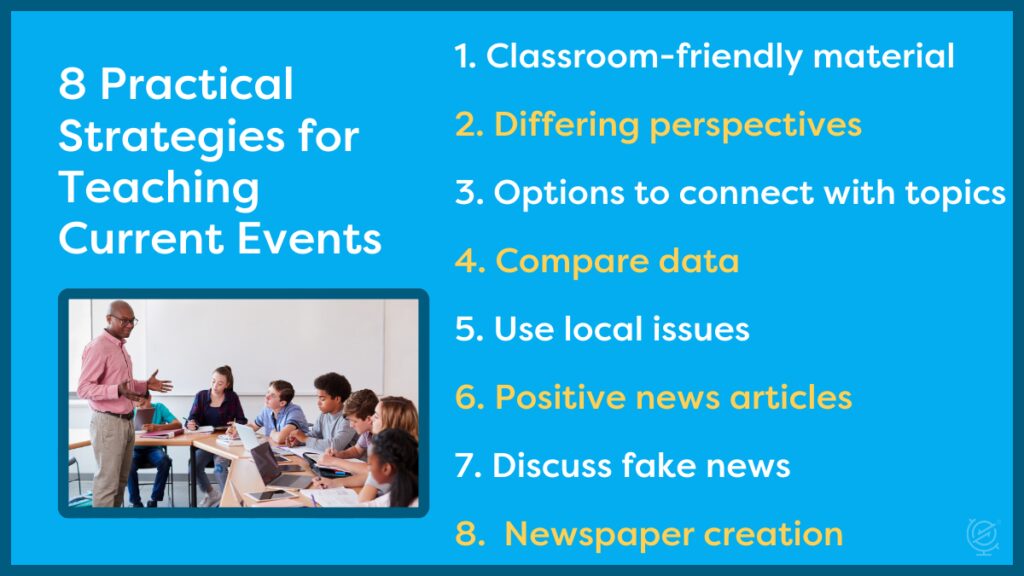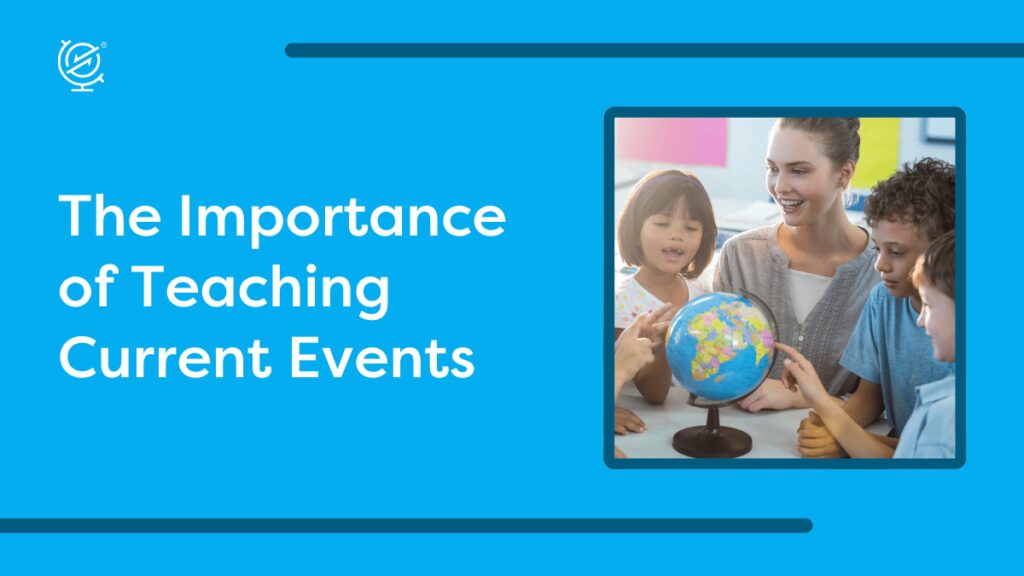Teaching Current Events -
Benefits and Classroom Strategies
What is the purpose of an education? Of the many possible answers to this question, one answer rises above the rest: to create critical thinkers who are civically engaged in solving real-world issues and bettering the human condition. That’s a daunting task for any teacher. The challenge of teaching current events can be broken down into more manageable segments. One of those components is introducing students, even in their early years, to the benefits of staying knowledgeable about local and national events.

How Students Benefit from Current Events Instruction
The positive impact of teaching current events is well-documented. When students are informed about the news, they:
- Build analytical and critical thinking skills
- Develop empathy
- Connect with the global community
- Grow media literacy skills
- Are exposed to how news articles, newscasts, podcasts, and other news sources use the clear, concise, unbiased language of news writing
- Are encouraged to think beyond themselves and the people they know
- Become cultured
- Become comfortable with differences across people and places
- Learn content relevant to the world they inhabit
- Will grow into informed voters
8 Practical Strategies for Teaching Current Events
Teachers may be hesitant to introduce current events to their students because of how politicized and divisive many topics can become. However, using the strategies suggested here, teachers can lead a balanced discussion in which all students’ voices are heard and all sides are considered.

- Use classroom-friendly, curated material. This ensures age-appropriate content that meets students’ cognitive abilities and emotional development. Publications such as News Currents are written and formatted specifically for learners of varying abilities and backgrounds. News Currents handcrafts its stories to emphasize background knowledge, vocabulary in context, and critical thinking skills. Their program also promotes dialogue and debate, not passive listening, so students become engaged news citizens.
- Present differing perspectives in the same lesson. Opinion articles are a great way to do this. Use articles that look at the same topic (artificial intelligence, immigration, minimum wage, nuclear energy, police reform, etc.) from different sides. A fun way to challenge students’ thinking in this activity is to ask them to argue on behalf of the side they disagree with. For example, if a student believes that artificial intelligence is detrimental to society, ask them to speak about its positives, and vice versa.
- Use creative alternatives to connect with topics. Let students choose how they want to conclude a unit or topic: a podcast, a debate, a newscast, a game for the class, a skit, etc. This allows students to find a personal way to connect to the content and feel empowered about their learning.
- Compare data. This is one of the best ways to get students to use their critical thinking skills. Choose any data set you think your students might find interesting–the top streamed shows during the pandemic, the nutritional information of competing restaurants, or stock market fluctuations depending on the year of the president’s term–and ask them to begin making observations and forging connections.
- Use local issues. If your town or city is proposing legislation–zoning for affordable housing, budgets for schools, or protecting nature parks, for example–get your students involved. Invite people close to the issue to come speak with your class. Read pieces from the local news and watch clips from local broadcasts. You can even hold a mock election and ask students how they would vote.
- Include positive news articles. The news cycle can be bleak. Remember to also bring students’ attention to stories about human accomplishments, acts of kindness, inventions, and discoveries. David Muir’s Person of the Week on ABC World News Tonight is a great place to find people who are generating positive change in their communities.
- Discuss examples of fake news. As you guide the discussion, help students spot the red flags that indicate the news source is not trustworthy (What’s the source? What other sources are cited? Who’s the author? What are their credentials? etc.). This is a great exercise in media literacy and appropriate for students of all ages.
- Have learners produce their own newspaper. On a regular basis (biweekly, monthly, etc.), students are responsible for covering current events for their peers. As responsible reporters, they need to do careful research, cover a wide range of issues, and present unbiased facts. The news can be global or even just about school: a team’s winning streak, for example.
The Importance of Teaching Current Events

That’s why there’s News Currents. Written for three age ranges and reading levels, it’s accessible to learners of all abilities. It helps build historical knowledge, promotes critical thinking, and invites engagement. To try News Currents for free, request a sample, which includes activities, slide decks, story text, and video!

